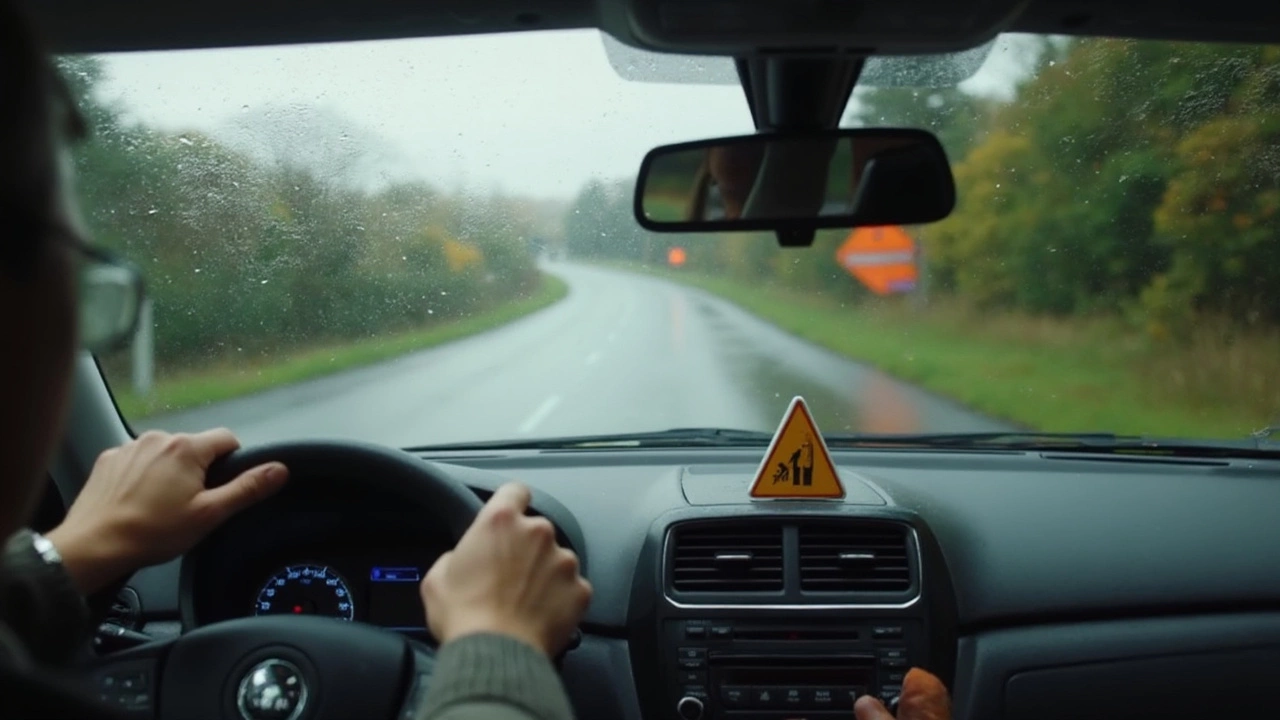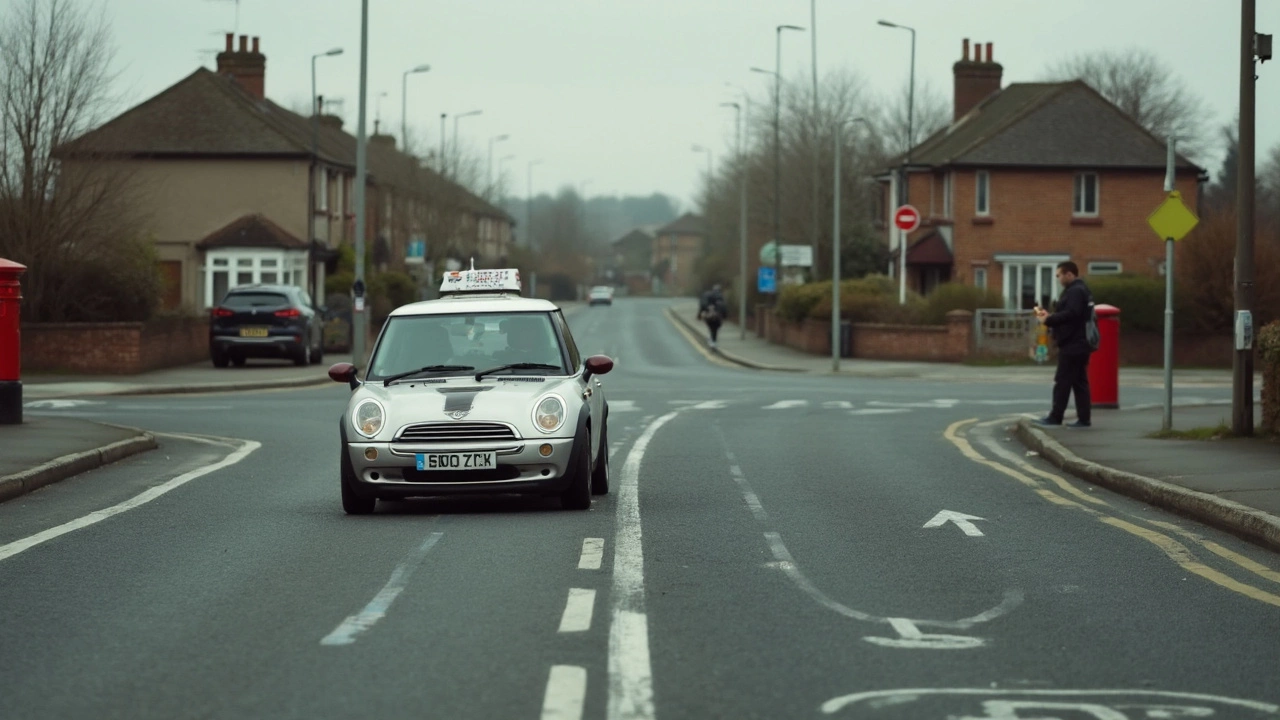Driving tests aren’t just about steering and stopping—they’re a stress test for your road smarts, and getting your lane wrong can trip you up fast. Loads of folks lose points, or totally fail, just for drifting out of their lane or picking the wrong one at a junction. Examiners take this super seriously because messing up lanes can be dangerous in real life—not just annoying other drivers, but causing real crashes.
The rules sound simple: stick to your lane, signal before you change, and only switch when it’s safe. But nerves, odd road layouts, or getting distracted for half a second can throw you into the wrong spot, and examiners will spot it. What counts as a mistake and what’s a dealbreaker? That’s where things get interesting: sometimes you can fix it and carry on. Other times, it’s an instant fail—especially if you put someone at risk or ignore road markings and signs.
- What Examiners Watch for with Lane Choices
- Common Lane Mistakes That Can Fail You
- Can You Recover from Being in the Wrong Lane?
- Tips to Master Lane Discipline on Test Day
What Examiners Watch for with Lane Choices
When it comes to the driving test, your lane choices are under a microscope. Examiners want to see you pick the right lane for where you're going, stay centered, and actually follow the arrows and road markings—no lazy drifting or last-second swerves. They’re not just nitpicking for fun; a wrong move in real traffic could mean a crash or a near-miss, which is exactly what they want to weed out.
If you’re not sure what they care about most, check this out:
- Lane Position: Are you dead-center in your lane, or are you creeping too close to the curb or the next car? Wobbling around is a red flag for them, even if you think your wheels are straight.
- Right Lane at the Right Time: Approaching a roundabout or junction? Picking the right lane early and sticking to it is key. Examiners lose patience if you’re weaving or changing lanes late, especially if you ignore road signs.
- Mirror and Signal Checks: Before you switch lanes, they want to see that you actually check your mirrors and use your indicators. Miss those, and they’ll mark it down every time.
- Responding to Road Markings: Those “LEFT LANE MUST TURN LEFT” arrows aren’t suggestions, and examiners expect you to follow them like gospel. Cutting across solid white lines or ignoring lane arrows is a classic way to fail.
- Keeping Safe Distances: Staying safely between other vehicles in your lane—not tailgating, not drifting—is a must. Many test-takers forget this part when nerves kick in.
If you want to really know how picky they get, have a look at this sample from recent driving test marking sheets:
| Lane Fault | How Examiners Score |
|---|---|
| Poor lane position | Minor (if safe), Serious (if unsafe/cause driver to brake) |
| Late lane change | Minor if corrected safely, Serious if causes confusion |
| Ignoring lane arrows/signs | Usually Serious fault |
| Unsafe lane change | Immediate fail |
So, on your road test, think of lane discipline as more than just “don’t drift.” The examiner is watching if you plan your moves, stay aware, and never take a guess when it comes to which lane you belong in. There’s no winging it here, not if you want to pass.
Common Lane Mistakes That Can Fail You
Lane mix-ups aren’t just small slip-ups—they’re one of the fastest ways people fail their driving test. Examiners are paying close attention to how you choose and stick to your lane, especially when roads get busy or complicated. It's all about safety and making sure you don’t surprise anyone around you.
There are a few mistakes that come up again and again:
- Drifting between lanes: If your car keeps wandering over the line or you cut across lanes without checking mirrors and signaling, you’re in trouble. Examiners see this as a sign you don’t have full control.
- Wrong lane at junctions or roundabouts: Picking the wrong lane when turning left or right—or entering a roundabout from the wrong lane—confuses everyone around you and is a common reason for a test fail. Examiners want you to read road signs and markings and follow them as expected.
- Last-second lane changes: Suddenly swerving into another lane without giving enough warning is a red flag. On your test, missing your exit is better than making a risky move.
- Staying in turning lanes: Sticking to a lane marked for turning when you’re going straight (or vice versa) shows you’re not paying attention, and that can cost you points or the whole test.
- Failing to yield: Not giving way when you're supposed to—like merging onto a major road—because you picked the wrong lane can be dangerous, and examiners won’t let that slide.
If you think it sounds harsh, check this: recent data from test centers across the UK show that lane discipline is in the top three reasons new drivers fail, right up there with not checking mirrors. In a sample of 500 failed tests, 27% of candidates messed up with lane discipline as their main error.
| Mistake | % of Fails |
|---|---|
| Lane Discipline | 27% |
| Mirror Checks | 29% |
| Signal Usage | 16% |
These mistakes can happen anywhere—multi-lane roads, intersections, or just drifting on a straight stretch—but they’re almost always avoidable if you stay focused. Pay attention to road markings, keep your eyes moving, and think ahead. If you’re ever unsure, don’t take a risk just to fix the mistake. Examiners are looking for safe, smart driving—not perfection.

Can You Recover from Being in the Wrong Lane?
Ending up in the wrong lane during your driving test is scary, but it doesn’t always mean you’ll fail right away. Examiners know people get nervous, so they watch how you react—sometimes more than the mistake itself. Quick, safe decisions matter most.
If you realize you’re in the wrong lane and it’s still safe to switch—use your mirrors, signal in plenty of time, check your blind spot, then change lanes when there’s a gap. Do it smoothly, and you’ll probably just get a minor fault. What gets most people in trouble is panicking, swerving, or changing lanes without checking mirrors or signaling. That’s when the examiner marks it as a serious or dangerous fault, which usually means an instant fail.
- If signs or road markings clearly show you need to stay in a lane (like on big roundabouts or junctions), you must obey them, even if you end up off route. Trying to force your way over last second is unsafe.
- If you’re stuck, stay calm and keep going safely in your lane. The examiner would rather you take a wrong turn safely than risk a crash.
In a 2023 report from the UK’s DVSA, around 14% of test failures were linked to poor lane discipline—not just being in the wrong lane, but making risky decisions to fix it. Actually, a lot of examiners say they’d rather see a candidate miss a turn and fix it safely than make a dangerous late move.
Here’s what you should do if it happens:
- Check your surroundings with mirrors and a shoulder check.
- If there’s space and time, signal and change lanes smoothly.
- If it isn’t safe, stick to your lane and follow the road—let the examiner know you noticed, and that it’s safer to stay put.
- Don’t forget to breathe. Stay focused and carry on.
Your response shows the examiner you’re serious about safety. So yes, you can recover from being in the wrong lane on your road test—as long as you handle it safely, follow the rules, and don’t take a risk that could put people in danger.
Tips to Master Lane Discipline on Test Day
Nailing your driving test depends a lot on showing you get the basics—like keeping in the correct lane, reading the road, and reacting smoothly under pressure. Let’s cut out the guesswork and get straight to the stuff that really matters for lane discipline.
- Look Ahead Early: Always scan ahead and know which lane you’ll need before you get there. Most mistakes happen because folks spot signs or road markings late and end up making a last-minute swerve.
- Memorize Lane Markings and Signs: Lane arrows, solid and dashed lines, and signs showing allowed turns are there for a reason. Examiners love to test you in areas with confusing paint or weird junctions, so slow down and read the road.
- Mirror-Signal-Maneuver Works Every Time: Before changing lanes or making any move, do the classic routine—check your mirrors, signal, then make your move. Miss one of these steps and you risk a lane mistake that can cost you.
- Stay Centered—Not Crowded: You don’t score extra by hugging the curb or the center line. Aim to position your car in the middle of your lane, even in traffic. If you get too close to parked cars or drift over the lines, examiners notice.
- Expect the Oddball Scenarios: Sometimes, a bus lane opens for regular cars at certain hours, or a road splits unexpectedly after a bend. Take your time, read the signs, and don’t panic. Quick moves usually raise examiners’ eyebrows.
Quick stats? About 27% of test fails in the UK in 2023 were because of bad lane discipline or not following road markings, according to the DVSA.
| Lane Mistake | Chance of Failing Test (%) |
|---|---|
| Failing to stay in lane at roundabout | 40 |
| Not using turn lane correctly | 35 |
| Late or no signal when moving lanes | 30 |
If you do realize you’re in the wrong lane, stay calm. Don’t cut across traffic—finish the turn safely and follow examiner instructions. Trying to over-correct fast is what usually gets people failed for lane discipline errors.
Bottom line? Practicing these basics before test day makes lane choices automatic, and that’s what impresses your examiner the most.

